You won’t do much better than the barbell row when it comes to gaining back strength and size. Better yet, the strength you gain from rowing a heavy barbell in a hinged position carries over to the strength movements you love to do. You’ll also take your core and grip strength up a notch or three (but more on that below). Read up below for a step-by-step instructional on how to do the movement, plus variations, alternatives, and benefits explained.
Editor’s Note: The content on BarBend is meant to be informative in nature, but it shouldn’t take the place of advice and/or supervision from a medical professional. The opinions and articles on this site are not intended for use as diagnosis, prevention, and/or treatment of health problems. Speak with your physician if you have any concerns.
Video Guide
You can also check out this video tutorial from Jake Boly, BarBend‘s former training editor, to learn how to perform the barbell row:
How To Do the Barbell Row
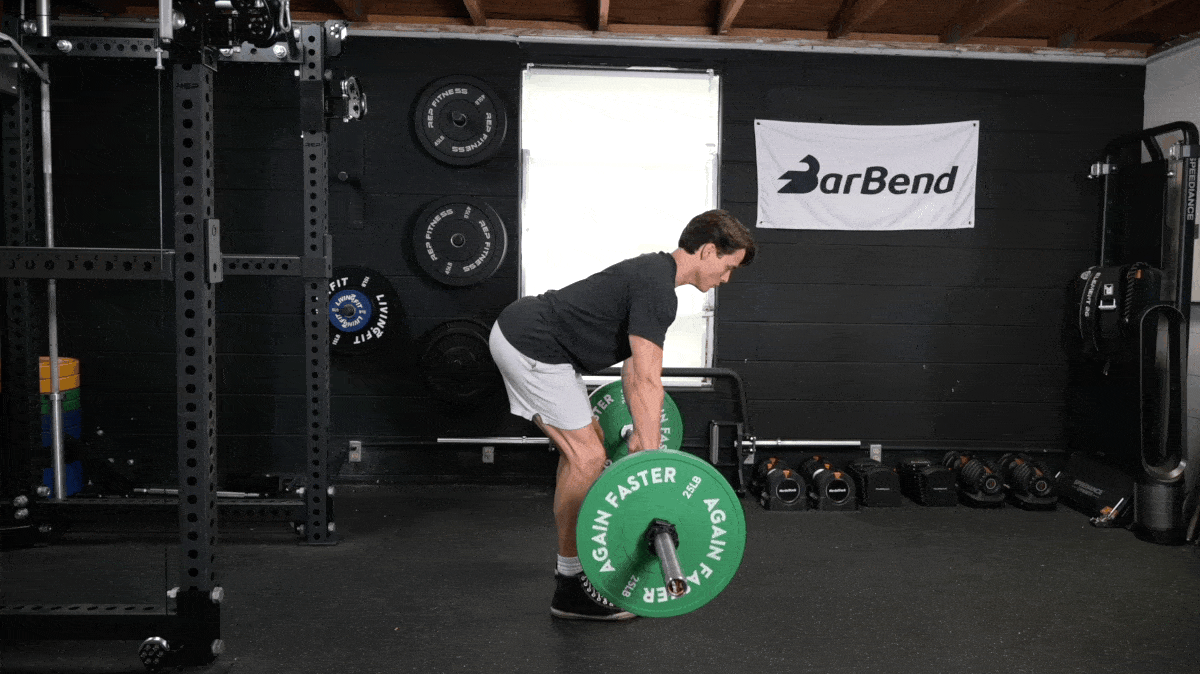
- Set Up: Stand upright with your feet under your hips and holding a barbell with a double-overhand grip just outside your thighs.
- Hinge Over: Tip over by pushing your butt backward while keeping your knees mostly straight, allowing the bar to slide down until it reaches around your kneecaps.
- Pull: Brace your core, keep your back flat, and pull the bar up towards your lower abdomen. Keep your upper arms tucked tightly to your sides.
Coach’s Tip: Maintain a consistent torso angle while you do the barbell row. The more upright you are, the less you’ll use the target muscles in your back.
Barbell Row Variations
The barbell row itself is surprisingly customizable. If the default movement isn’t doing it for you, you can swap to these row variations instead:
Seal Row
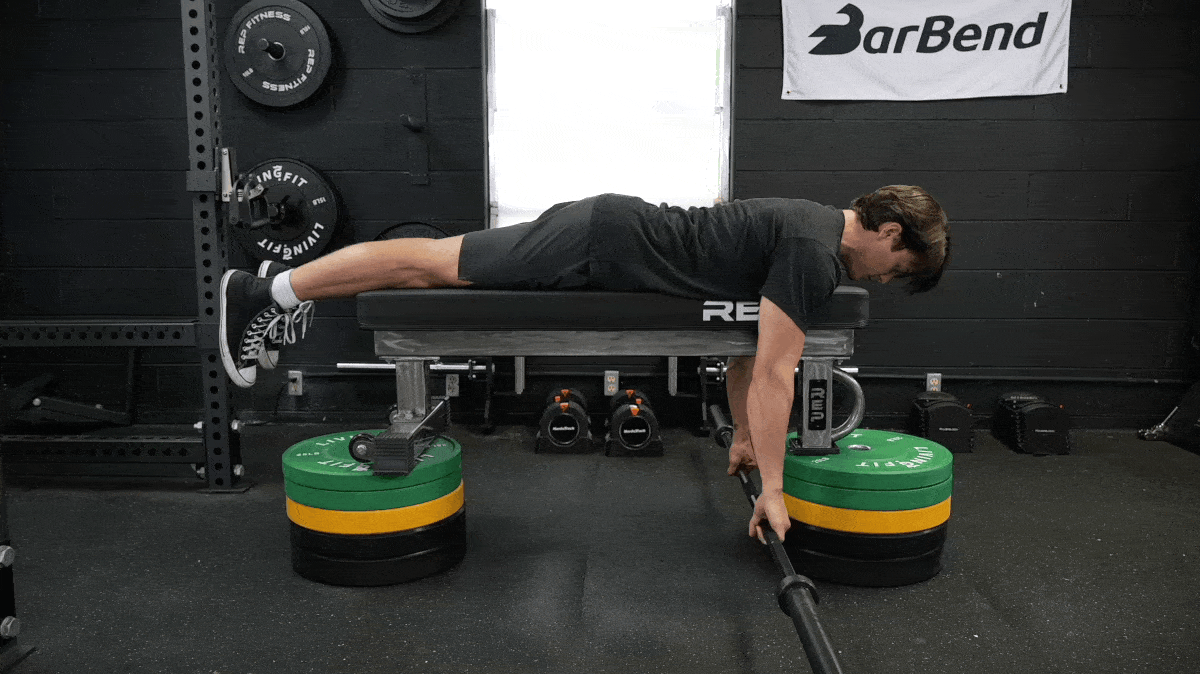
- You’ll need to stack a flat weight bench onto several bumper plates or two plyo boxes if you don’t have a seal row station on-hand in your gym.
- Lie on the bench with a barbell underneath. If you want to load the barbell with weight plates, make sure to elevate the bench a bit higher.
- Grasp the bar with your preferred rowing grip, brace your core, and pull it up towards the underside of the bench.
Seal rows make for an excellent barbell row substitute if you want to practice the movement pattern but can’t load your spine too much. Use this one to establish a better mind-muscle connection, or to work around an injury.
Pendlay Row
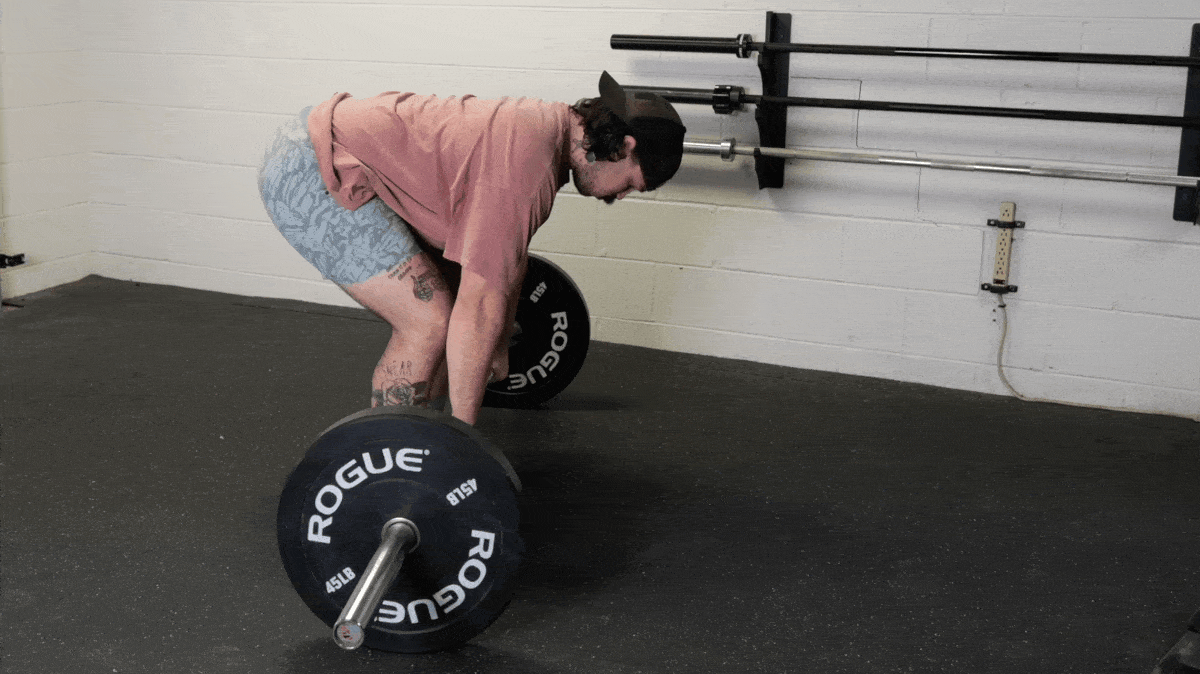
- Set up like you would for a stiff-legged deadlift with the bar on the floor and your hips hiked up high until your torso is basically parallel to the floor.
- From here, grasp the bar with a narrow-to-medium grip, inhale to brace your core, and tighten your posterior chain.
- Explosively rip the bar off the ground by driving your elbows up and back slightly. The bar may bump against your torso.
Named for renowned Olympic lifting coach Glenn Pendlay as one of his go-to weightlifting accessory exercises, the Pendlay row prioritizes training for power and rapid movement. Try this one if you want to break a real sweat or are training for a sport.
Barbell Row Alternatives
If you enjoy training your back but don’t want to do barbell rows specifically, don’t fret — there are plenty of barbell row alternatives available if you’d rather do something else while still working toward your goals.
Dumbbell Row
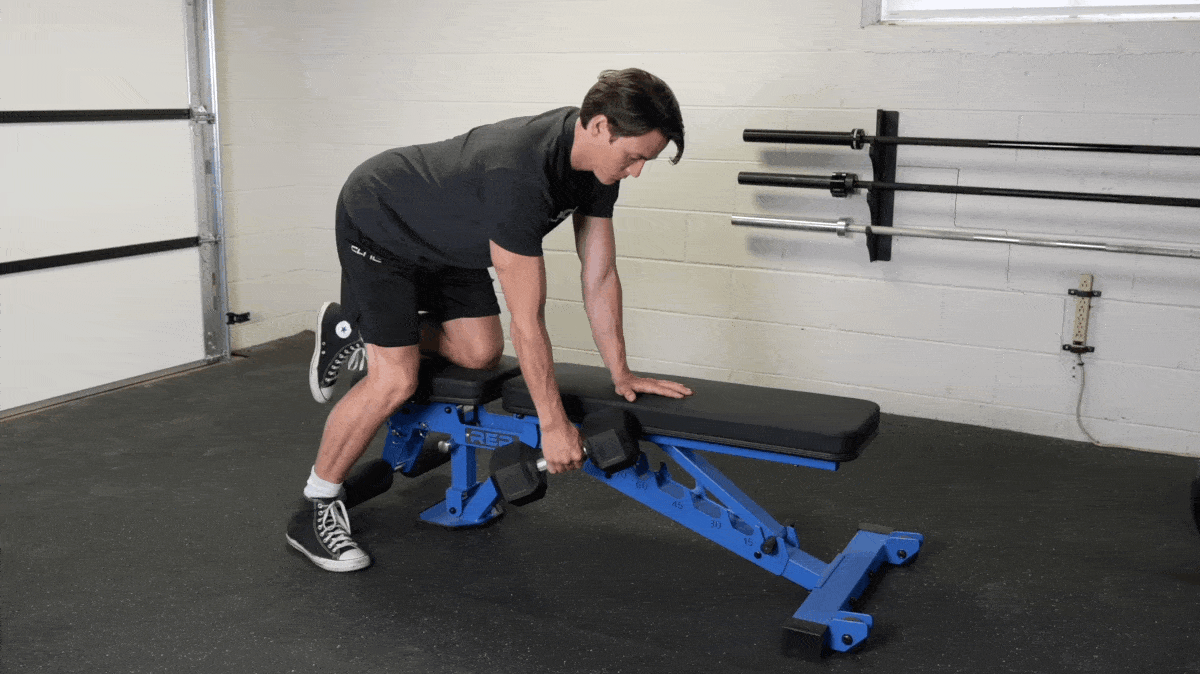
- Set up on a flat weight bench by placing your non-working palm and corresponding knee onto the bench.
- Bend over and reach down to grasp a dumbbell on the floor.
- Brace your core and pick the dumbbell off the ground, letting your arm hang loosely.
- From here, initiate the dumbbell row by pulling your elbow up and back towards your hip crease.
Dumbbell rows are very similar to barbell rows, but allow you to focus on working your back unilaterally, one side at a time. This is a good swap to make if your lower back is fatigued or vulnerable, or if you have a muscular imbalance you want to address.
Seated Cable Row
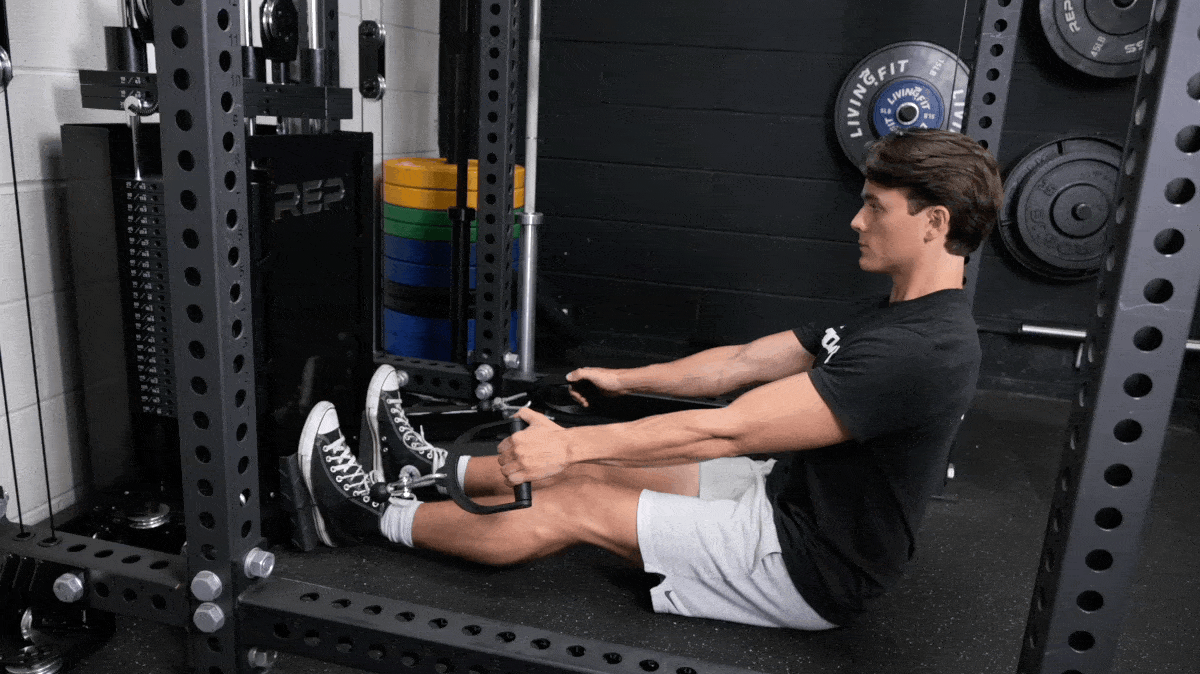
- Sit in front of an adjustable cable station or the bench of a seated cable row station if you have one.
- Place your feet against the slates and sit upright holding the handle of your choosing in your hands.
- Brace your core and row the handle or handles in towards your lower abdomen.
The seated cable row works your back muscles in the same way as the barbell row, but it applies tension more consistently. Go for this one if you want to isolate your lats and traps without taxing other muscles in your posterior chain.
Who Should Do the Barbell Row
Below are some reasons why strength, power, and fitness athletes can benefit from performing bent over rows.
Strength and Power Athletes
- Powerlifters and Strongmen/Strongwomen: Bent over rows are a great movement to increase back strength and muscle growth. Movements like the deadlift, squat, bench press, loaded carries, and overhead lifts all require a strong back, making the bent-over barbell row an excellent accessory exercise for all strength athletes.
- Olympic Weightlifters: Olympic weightlifters can use the bent-over barbell row to increase back strength and muscle growth. A strong back is key for movements like pulls, squats, and proper positioning in the overhead squat and jerk. Movements like the bent-over barbell row, Romanian deadlift, and Pendlay row are all great ways also to increase positional back strength necessary for snatches and cleans (pulling position).
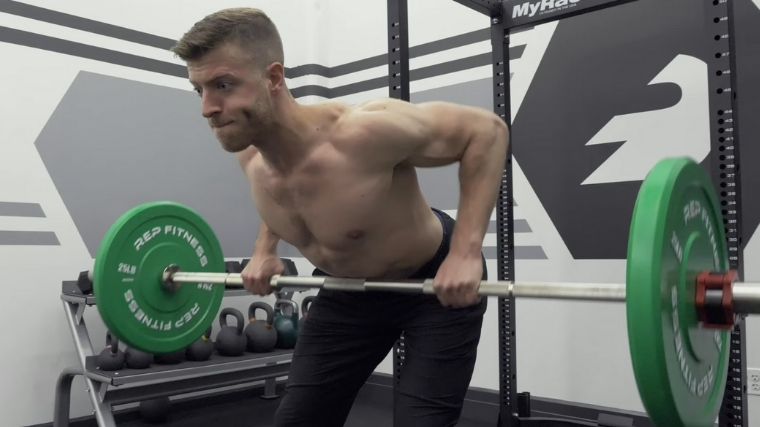
General Populations
The same benefits that apply to strength athletes — more back strength, muscle, and stability — apply to fitness athletes and everyday gym-goers. A CrossFitter, for example, will be able to bang out more chest-to-bar pull-ups with a stronger back and experience less lower-back fatigue during high-rep clean & jerks.
Barbell Row Sets and Reps
Here are some basic suggestions for how to add the bent-over barbell row into your workout routine. Remember that these are just suggestions based on goals, and you can alter them as you see fit.
- To Gain Muscle: Try 4 sets of 6 to 8 reps with a moderate to heavy weight. Don’t be afraid to use lifting straps or a belt here so you can ensure that your back is the limiting factor.
- For Strength: Keep it simple with 3 to 5 sets of 4 to 6 reps and a heavy weight.
- To Build Endurance: Try 5 sets of 10 reps with a light weight and very limited rest times of less than one minute.
Benefits of the Barbell Row
If you don’t know, now you know. Here are the main benefits you can expect from adding the bent-over barbell row into your routine.
Upper Back Hypertrophy and Strength
A big back signals to the rest of the world that you lift. Thick lats and traps that jut out of a large t-shirt look, admittedly, pretty bad-ass — and it’s ok to want to look like you lift. Beyond aesthetics, a big back can improve your lifts. Along the way, your back will get stronger, and a stronger back can brace harder for more spinal stability during movements like the squat and deadlift.
A thick back also provides a base from which you can perform horizontal presses such as the bench press and dumbbell press. The bent-over barbell row, specifically with a barbell, is one of the best strength- and muscle-building movements. It allows the lifter to use more weight relative to other rowing movements. It also recruits the forearm and biceps muscles, which leads to a stronger grip. Lastly, the core is more engaged as it’s constantly supporting a bent-over position and rigid torso.
Application to Deadlifts and Pulling Movements
As the name implies, the bent-over barbell row has the lifter maintain a hinged position for the movement’s duration. Maintaining a hip hinge while rowing weights forces the core and the lower back muscles to activate for the entire set. The hamstring and hips are engaged, too. Combined, all of those muscles are active during a deadlift, so you’re essentially training them to get stronger in a deadlift position while building up your back.  In short: the bent-over row will enhance the stability and durability of the muscles needed during deadlifts and other similar pulling movements.
In short: the bent-over row will enhance the stability and durability of the muscles needed during deadlifts and other similar pulling movements.
Postural Strength and Control
Without proper strength, stability, and awareness of one’s body in space and the ability to resist lumbar flexion (spinal rounding), the athlete may find themselves in compromised positions resulting in injury or lackluster performance. Movements like the barbell row help increase the back (upper and lower) strength and reinforce proper spinal control and resistance to lumbar flexion under load.
Muscles Worked by the Barbell Row
The bent-over barbell row is a compound movement, which means it involves the movement of two or more joints. It also calls upon the muscles in the back, but also secondary muscles such as the biceps. Here’s a full breakdown of the muscles utilized in the bent-over barbell row.
Latissimus Dorsi (Back)
The lats are a large triangular muscle that spans the entire length of your back. A strong back helps you in nearly every single endeavor as a lifter. Stronger back muscles also let you maintain better posture.
Spinal Erectors (Lower Back)
The spinal erectors help stabilize the spine during the barbell row, as you’re hinged for the entire movement, and a strong lower back is necessary for nearly every lift.
Hamstrings
The hamstrings work isometrically to support the lifter as they assume the bent-over position (similar to the erectors). 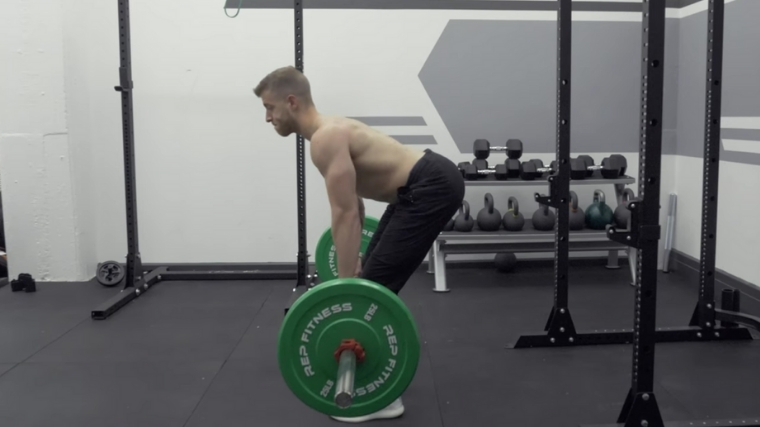 When done correctly, you should feel an intense stretch being placed on your hamstrings. The hamstrings work isometrically to support you and aid in setting your back during the bent-over barbell row.
When done correctly, you should feel an intense stretch being placed on your hamstrings. The hamstrings work isometrically to support you and aid in setting your back during the bent-over barbell row.
Scapular Stabilizers
Your scapulae, or shoulder blades, allow you to retract and protract your shoulders. Simply put, they let you squeeze your back muscles. These small muscles are engaged entirely during the barbell row as your squeeze and relax your shoulder blades during each rep.
Common Barbell Row Mistakes
The barbell row is, perhaps, the best all-around back exercise you can do. However, it’s also one of the easiest compound exercises to mess up. To ensure your rowing is safe and productive, steer clear of these common errors:
Being Too Upright
The most common mistake people tend to make with barbell rows involves their torso. The row targets your lats, mid traps, rear deltoids, and many of the other smaller muscles in your upper back — as long as you can remain hinged over. The more upright your torso is, the shorter your range of motion will be and the less leverage those target muscles have. You can lift more weight, sure, but all that work won’t go to the right area.
Not Using Straps
The barbell row allows you to work with pretty heavy weights once you understand the form. This means that many different muscles come into play, and you don’t want your grip to be the limiting factor that determines your progress. If you find that you can’t hold onto the bar itself, but your back still has a lot to give, use lifting straps.
FAQs
What muscles does the barbell row work?
Muscle activation will vary slightly depending on the row variation being performed. The following muscles are trained as prime movers with the traditional barbell row:
- Lats
- Rhomboids
- Middle/Lower Traps
- Posterior Delt
On top of these muscles, the barbell row will also train synergist and stabilizer muscles like the erector spinae, supraspinatus, infrapsinatus, and many more.
Can beginners barbell row?
Yes. Beginners are perfectly fine performing barbell rows on a regular basis. Like every compound movement, the barbell row can benefit from being first learned under the watchful eye of a coach.
What are good barbell row progressions?
A couple good barbell row progressions worth trying are the dumbbell row and the seal row. The dumbbell row is a great progression that everyone can implement in nearly any gym setting, while the seal row can be a great progression for learning lat contraction without spinal loading.
What are the differences between the dumbbell and barbell row?
One major difference between these two rows is that the dumbbell row is a unilateral exercise (one-side of the body) and the barbell row is a bilateral exercise. Also, each movement will activate the core slightly differently. In a 2015 study published in the International Journal of Sports Medicine, the authors suggested that the dumbbell row was slightly better at activating the external oblique than the barbell row. (1)
How high should I row the barbell to the chest?
It’ll vary based on body type, but a good rule of thumb is to row the barbell to your belly button. Remember to squeeze your shoulder blades together for each rep.
What should you do if I can’t keep my back flat during a bent-over barbell row?
Rounding your back during a bent-over row is potentially dangerous. The easiest way to ensure your back stays rigid is to lower the load. Otherwise, you’ll compensate by rounding your spine, and that’s a no-no.
Can I use a little body English during my bent-over rows?
Typically, no. The main goal of a bent-over barbell row is to target the back muscles for strength and size. For that, you need tension, and momentum will kill that tension. So, keep your reps slow and controlled. That said, if you are at the end of a set, and use a little momentum to sneak out a few more reps, then that’s OK as long as you still feel your back muscles working.
The post How to Do the Barbell Row: Proper Form and Variations appeared first on BarBend.

